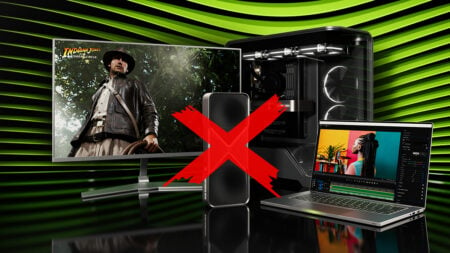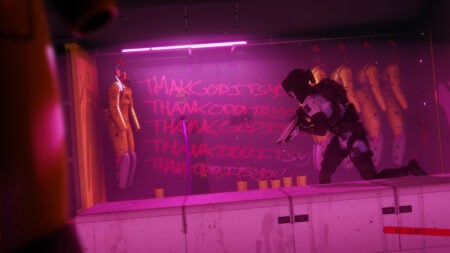Skip To...
When I think about some of the genres that are challenging to dive into facefirst, RTS games come to mind. Think about it: there are so many mechanics, UI elements, and things to manage that even the most experienced gamers will be prone to experience a short circuit. However, Homeworld 3 did something great. Despite being the third mainline game of the franchise, it never deters newcomers from getting their feet wet in this strategy adventure. The onboarding process is so smooth that anyone will be able to hit the ground running in seconds. And while all that seems like a recipe for success, it isn’t quite that, unfortunately. In fact, due to its uneven story and wobbly pacing, Homeworld 3 collapses in on itself like a dying star.
Homeworld 3 Review

While I played Homeworld years ago, I’m not a diehard fan or an expert fleet commander. So, my experience with Homeworld 3 happened with me wearing the ol’ “newcomer” goggles. Many gamers’ expectations were through the roof, but I went in almost blind, and what I saw was fine, to say the least. This is because, as a new player, the mechanics aren’t hard to grasp, and the gameplay is exceptionally smooth. Still, for someone who enjoys single-player aspects more than anything and was waiting for a compelling and fascinating larger-than-life plot, I’m sorry to be the bearer of bad news. Sadly, if my eyes could roll out of my skull, it could’ve happened due to the game’s predictable and cringey story.
Story: A Weak Space Odyssey

Let me get this out of the way: Homeworld 3‘s weakest aspect is its story. The major problem with its narrative is that it’s hard to find something memorable about it. Even with the — at first glance — beautiful pre-rendered cutscenes, they are undermined by awkward facial animations and the high school drama-like dialogue. Still, a few salvageable things from this almost 10-hour campaign, depending on the difficulty, are worth experiencing, at least for the gameplay part.
For those worried about jumping into the third installment, don’t be. Homeworld 3 takes a welcoming approach to its story, making it all new and with only a few callbacks for veterans. In the campaign, you assume the role of Imogen S’Jet, or the fleet’s navigator, who spends most of the plot in a roomful of water plugged into the ship. Her goal is to find out what happened with Karan’s fleet, the second game’s protagonist, while also investigating what the ‘Anomaly’ is and how it threatens the galaxy. Little by little, you start discovering other enemy forces hell-bent on using hyperspace technology to wreak havoc everywhere. So, it’s up to you and your group of eclectic soldiers to put a stop to this.
On paper, the plot doesn’t sound bad. You have a new protagonist who tries to appeal to new fans and just enough fan service for the franchise’s veterans. Sadly, Homeworld 3 butchers the delivery of its narrative. What could’ve been Imogen’s epic journey turns into a paper-thin script full of less-than-clear motivations and awkward dialogue. Pair that with predictable “twists,” pacing issues, and zero character development, and you have a plot as empty as an uninhabitable planet. However, credit where it’s due, and that is in the gameplay dynamism of all missions that, thankfully, salvage this narrative conundrum.
Gameplay: Simplicity Over Strategy

If the story is the supernova chasing your ship to burn it to a crisp, the gameplay is that hyperspace gate allowing you to escape to greener pastures. Homeworld 3 features simple strategy mechanics that shine in any of the game modes. In the single-player campaign, while the middling story was enough to make me want to jump into a black hole, the dynamic missions made me want to stay. Every objective moves away from the typical “build a fleet and defeat enemies” to salvage items, capture points of interest, hide inside a nebula, ambush foes, and more. Just for this, I felt the campaign was a long tutorial worth playing before moving on to the juicy bits of Homeworld 3.
Since I’m not a PvP fan, I stuck with War Games, which is a roguelike mode with optional co-op, and loved it. It truly captured that “survival” feeling of starting with one ship, slowly building a fleet, and completing objectives before enemy forces overwhelm you. In it, everything you learn by playing the campaign comes into play with interesting modifiers. You can increase the damage output of certain ships by lowering other stats and, after you get experience, unlock permanent buffs for subsequent runs. Overall, it felt like a welcome palate cleanser while appealing to newcomers who want an experience with difficulty that increases gradually.
Game modes aside, the hands-on mechanics during any match are easy to understand. Managing your fleet is as simple as pressing one button. Also, I enjoyed the limited number of ships. I know this might be a dealbreaker for some, but not for me. Knowing I have a dozen of gameplay-relevant ships instead of hundreds I’ll never use is refreshing. If I could change one thing, though, it’d be the camera. Getting the grasp of it takes time, and even after tweaking some settings, it can still feel tanky in most scenarios.
Graphics & Audio: Galactic Beauty

Another strong point of Homeworld 3 is its audio/visual design. Each location, regardless of the game mode, left me in awe. The derelict shipwrecks contrasted by a seemingly neverending tapestry of stars or abandoned space facilities are simply works of art. While I felt most maps were small in terms of gameplay, the overall design was jaw-dropping. It captured the feeling of a post-war galaxy, which we saw in Homeworld 2, but maintained the sci-fi beauty fans of the genre love.
Oddly enough, the audio design is particularly strong. While I didn’t find the soundtrack as memorable as I was hoping it to be, the overall work on the general sound effects was terrific. Zooming in just to hear your ships duke it out against another fleet and the sounds of lasers bouncing from one place to another was fantastic. Sadly, the voice acting wasn’t quite as impressive. I don’t think the voice actors are bad. However, it feels like the higher-ups directing them just asked them to read the lines without emotions. When a nameless Engineer delivers their lines better than the protagonist, you know something’s wrong.
Conclusion: A Bit Too Modern

When I look at Homeworld 3, I see it as a game that is too modern for its own good. While it tries to appeal to a larger audience and get RTS rookies to play, it provides almost no challenge once you dive fully into it. On the one hand, you have simple and easy-to-grasp mechanics for newcomers, which makes Homeworld 3 feel like a new beginning for the series. On the other hand, I never felt backed into a corner by the game, so it never gave me the satisfaction of pushing me to pull off some over-the-top and strategic manoeuvers. At most, I felt like I just put my ships on auto-pilot and watched the light show unfold.
Still, I feel that any new player will find a stepping stone here; a place to begin their RTS adventure. But after that, I don’t see any reason to remain in Homeworld 3, where there are deeper and more sophisticated games of the genre out there. Hopefully, if we ever get a fourth installment, the developers will make something to appeal to all types of players. In the meantime, all I see is a promising ship that ran out of fuel too fast, and it’s now floating aimlessly through space.
Review copy provided by Publisher.
Homeworld 3 (PC Reviewed)
Homeworld 3 puts its visuals and design front and center but puts the strategy layers aside in favor of simple mechanics that work for new players but not so much for veterans.
Pros
- Stunning visuals.
- Easy-to-grasp mechanics.
- An engaging roguelike game mode.
Cons
- Predicatble and boring story.
- Lack of deep strategy layers for veteran fans.







